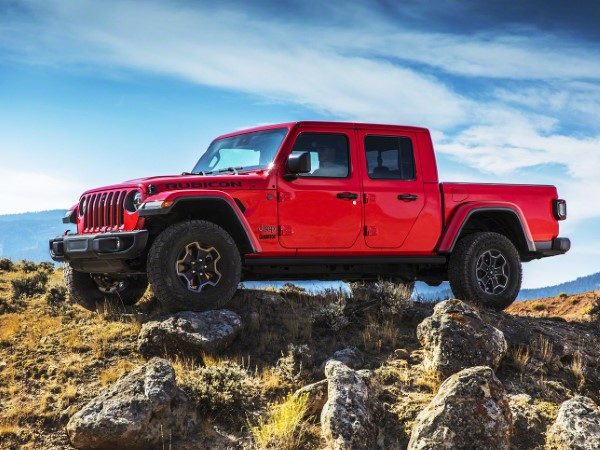Jeep Unveils the Gladiator Pick up


One is as old school as they come: big wheels, body-on-frame, retro styling, round headlights, square taillights, even hood clips helping to cover a V-6 and a traditional transmission — a rolling paean to nostalgia.
The other is all visionary, but with potential: big wheels, futuristic styling, a giant battery pack hooked into four powerful electric motors — a thoughtful study of what pickups would look like in a world that had never heard of fossil fuels.

If all goes as planned, within a couple of years, these two midsize pickups, the 2020 Jeep Gladiator and the Rivian R1T, due in late 2020, might square off on some rocky trail and perhaps prove who the real trail boss is.
But until that day, whenever these two roll into the same auto show, we’ll have to stick to comparing them on paper.
Old school vs. future world
| Here’s how the 2020 Jeep Gladiator and the Rivian R1T compare on specs, design elements and capabilities. | ||
| 2020 Jeep Gladiator | Rivian R1T | |
| Wheelbase | 137.3 in. | 135.8 in. |
| Length | 218 in. | 215.5 in. |
| Engine | 3.6-liter V-6 | Quad-motor system, sends 147 kW and torque control to each wheel |
| Payload | 1,600 lbs.* | 1,764 lbs. |
| Towing capacity | 4,000 lbs.* | 11,000 lbs. |
| Water fording depth | 30 in. | 39 in. |
| Name | Jeep resurrected the Gladiator name from its concept vehicle archive. | Rivian is proof that automakers still believe in letter and number nomenclature. |
| Facial expression | Essentially the same as the redesigned Wrangler but with larger grille slots for enhanced airflow for towing | A thin light bar that runs from quarter panel to quarter panel with 2 vertical lights in between, which look like nostrils |
| Unique feature | Removable roof options: a standard black hard top, a soft-top system or body-colored removable hard-top options on top trims | A “gear tunnel” between rear seats and the bed that runs the width of the R1T, meant for extra storage |
| Manufacturing location | FCA’s Toledo Assembly Complex in Ohio | Former Mitsubishi Motors plant in Normal, Ill. |
| *For Sport base model | ||
Article Courtesy of Aarian Marshall Wired Magazine

